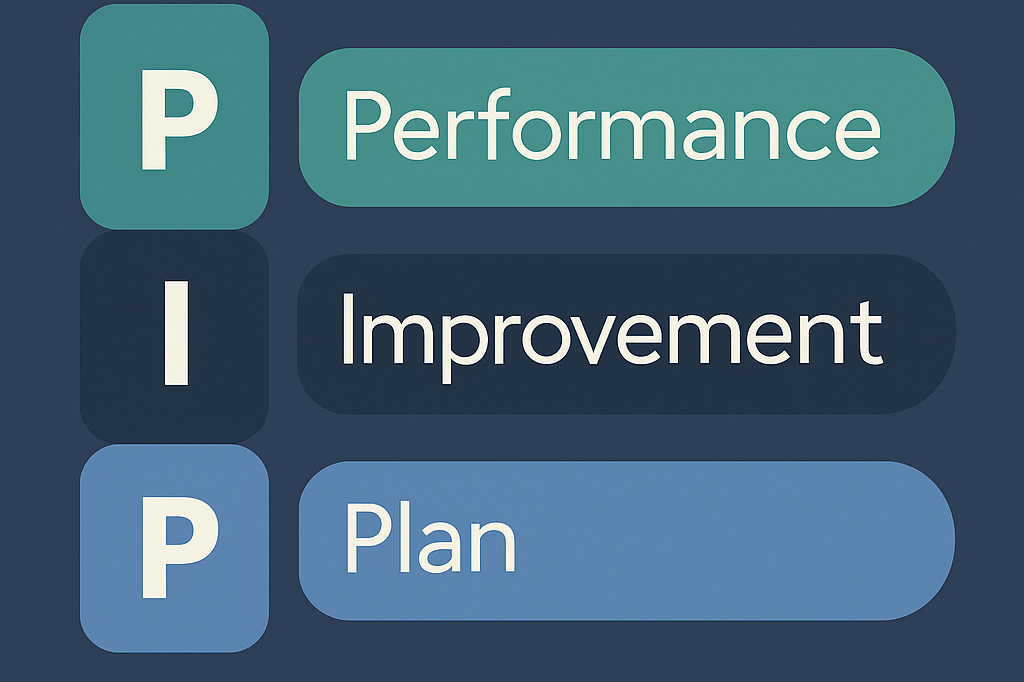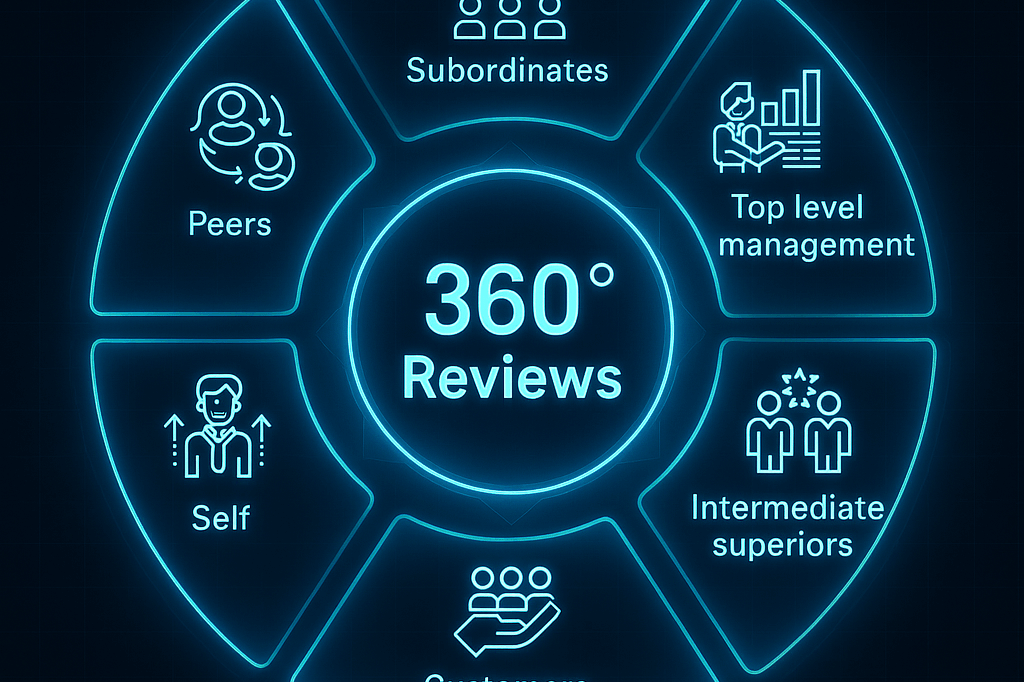I’ve seen too many teams lose momentum because feedback came weeks after the moment that mattered. By then, the context is gone, and motivation fades.
Real-time feedback changes that completely. It gives people direction while the action is still fresh. When feedback happens in real time, improvement becomes continuous and natural. It turns communication into progress and keeps employees engaged.
In this guide, I’ll break down how real-time feedback works, why it matters, and how tools like Thrivea make it effortless to build a culture of learning that never slows down.
What is real-time feedback?
Real-time feedback means giving or receiving feedback the moment something happens, right after a task is completed, a meeting ends, a sale is closed, or a customer interaction takes place. It’s immediate, specific, and tied directly to the action that triggered it.
If I finish a project and my manager comments on it that same day, that’s real-time feedback. If a customer clicks a “Was this helpful?” button after using a product feature, that’s also real-time feedback. It closes the gap between performance and response, so learning or correction happens right away.
This kind of feedback keeps both employees and customers engaged. Instead of waiting for an annual performance review or a monthly customer satisfaction survey, people get instant feedback that helps them improve on the spot. It turns every moment and every interaction into a chance for continuous improvement.
How real-time feedback differs from traditional feedback methods
Traditional feedback methods rely on scheduled reviews or annual surveys. They’re slow. People forget the context, and the feedback loses impact. Real-time feedback, on the other hand, happens right when the behavior or event occurs. It’s immediate, frequent, and data-backed.
Old systems depend on annual performance reviews or delayed survey reports. Those methods might identify trends, but they rarely change behavior fast. Immediate feedback gives people a chance to improve while the situation is still relevant. That’s why continuous feedback models have replaced traditional feedback methods in most forward-thinking organizations.
For customers, the same shift applies. Instead of a quarterly survey, companies now use live chat, feedback widgets, or short pop-ups to capture user feedback in real time. This helps teams spot customer satisfaction trends and act before small issues grow into real problems.
Why timing matters?
Timing is everything in feedback. If you wait too long, you lose the chance to influence the outcome. When feedback arrives instantly, it connects directly to behavior. That’s how learning sticks.
In performance settings, real-time feedback reinforces good habits and corrects mistakes fast. It builds momentum and makes growth visible. For customer service, timing affects emotion; responding within minutes can turn frustration into loyalty.
The faster the feedback loop, the stronger the engagement. People trust systems that listen and respond quickly. Whether it’s a manager reviewing a task or a brand replying to customer feedback, speed drives continuous improvement.
Why real-time feedback matters for companies
Real-time feedback changes how companies learn, grow, and communicate. It turns every moment into a chance to improve performance, strengthen engagement, and create better experiences for both employees and customers.
1. Drives continuous improvement
Real-time feedback shortens the distance between action and improvement. When I get feedback right after I do something, whether good or bad, I can fix it fast. That creates a habit of continuous improvement. The loop becomes simple: act, receive feedback, adjust, repeat.
For teams, that speed compounds. A quick message after a presentation or a short comment during a project saves hours of rework later. Managers also benefit because real-time feedback gives them accurate data on what’s working now, not last quarter. The result is a constant cycle of learning instead of waiting for annual performance reviews to course-correct.
2. Increases employee performance and engagement
People perform better when they know where they stand. Continuous feedback provides that clarity. When feedback flows in real time, employees stay aligned with goals and feel supported instead of judged.
Recognition also lands better when it’s immediate. A quick “good job” after a client call has more impact than praise weeks later in a meeting. This kind of immediate feedback builds motivation, strengthens engagement, and reinforces productive behavior. Over time, it replaces anxiety around formal reviews with an ongoing sense of direction and progress.
3. Builds open communication and trust
Real-time feedback creates transparency. When communication is open and ongoing, there’s less guessing, fewer surprises, and more accountability. Employees know what’s expected and can respond immediately.
In my experience, workplaces that rely on regular feedback and open conversations perform better. Problems surface early, conflicts shrink, and trust grows. Managers become coaches instead of critics. The culture shifts from control to collaboration—and that’s when performance starts to scale sustainably.
4. Strengthens retention and motivation
People don’t leave companies where they feel seen, supported, and recognized. Real-time feedback builds that sense of fairness and visibility. When employees receive input and recognition as they work, and not months later, they understand how their efforts connect to company goals.
This ongoing feedback loop keeps motivation high because progress is clear. Small wins get noticed, and challenges are addressed before frustration sets in. Over time, that steady communication reduces turnover and builds a culture where growth feels achievable, not arbitrary. Employees stay because they can see themselves improving in real time.
How real-time feedback transforms employee performance and culture
Real-time feedback reshapes how teams grow and perform in the following ways
Moves beyond annual performance reviews
Traditional reviews look backward. Real-time feedback looks forward. Instead of saving notes for an annual performance review, managers share input as work happens. That shift makes evaluations fairer and more accurate because they’re based on recent behavior, not old memories.
When employees know what’s working right away, they adjust faster. They don’t wait months to find out whether they met expectations. This constant loop of feedback and improvement builds confidence, accountability, and steady progress.
Supports regular check-ins and coaching conversations
Real-time feedback fits naturally into regular check-ins. These short talks, weekly or biweekly, keep goals visible and remove surprises from formal reviews. Managers can track performance trends, clear obstacles, and keep the focus on development rather than judgment.
I’ve seen that consistent, small conversations make a bigger impact than one long evaluation session. Employees feel seen, guided, and supported instead of being “reviewed.” Over time, these check-ins turn into a coaching rhythm that drives continuous improvement.
Encourages constructive feedback and immediate recognition
When feedback happens in real time, it becomes part of the daily work culture. Constructive feedback corrects issues while they’re still small, and immediate feedback reinforces the right behaviors as they happen.
A quick Slack message after a strong client call or a note of appreciation after a tough sprint signals that effort matters. This real-time recognition lifts motivation, improves engagement, and helps people stay aligned with company goals. Recognition delivered instantly feels earned, not staged.
Links to 360-degree feedback and development plans
360-degree feedback provides a broader view — input from peers, direct reports, and managers. Real-time feedback speeds up that process. Instead of waiting for the next formal cycle, insights flow continuously, feeding into development plans that evolve throughout the year.
When employees get perspectives from multiple sources, they see patterns earlier and can work on specific skills right away. Managers gain clearer visibility into performance trends and can personalize growth plans instead of relying on generic reviews.
Connects with PIPs for continuous progress
Performance Improvement Plans (PIPs) often come too late in traditional systems. With real-time feedback, managers can spot small problems before they turn into formal issues. Quick, targeted feedback acts as an early warning system, guiding employees back on track.
Instead of using PIPs as a disciplinary tool, companies can use them as structured coaching frameworks supported by continuous feedback. That changes the tone from “fix this or else” to “let’s work on this together.” It keeps accountability intact while focusing on progress, not punishment.
Technology that enables real-time feedback
Technology is what turns real-time feedback from a good idea into a daily habit. With automated systems, analytics, and simple feedback tools, companies can capture insights in real time, respond instantly, and keep performance conversations alive without adding manual work.
Using performance review software to automate feedback cycles
Technology makes real-time feedback scalable. With the right performance review software, managers can share feedback instantly, track responses, and store insights for later review. Automation keeps the rhythm consistent—no one has to remember when to follow up or check progress.
Modern systems like the top performance review software platforms combine continuous feedback, recognition, and goal tracking in one place. They remove manual admin work and ensure feedback becomes part of daily operations, not an occasional event. Automation doesn’t replace human input; it just keeps it moving.
Dashboards, analytics, and feedback data
Real-time systems collect more than comments; they collect feedback data. Dashboards turn that data into actionable insight by tracking how often feedback is shared, whether it’s positive or negative, and which teams engage most.
Analytics reveal trends across departments and help leaders measure whether feedback leads to visible performance gains. Over time, patterns in sentiment and frequency show how well the feedback process supports morale, motivation, and results. This turns feedback from opinion into evidence.
Tools for continuous improvement
Continuous improvement relies on visibility, and that’s where technology shines. Companies use feedback widgets, pulse surveys, and embedded comment tools to collect input from employees in real time. These features make it easy for anyone to share thoughts the moment they arise.
Integrations inside HR platforms connect live chat, recognition feeds, and feedback management tools so leaders can monitor engagement and respond quickly. The result is an always-on feedback environment that helps teams learn faster, stay aligned, and strengthen company culture with every interaction.
Building a culture of continuous feedback
Building a real-time feedback culture takes more than tools. It’s about habits, leadership, and trust. When feedback becomes part of everyday communication, people stop fearing it and start using it to grow. The goal is better feedback that drives progress and connection.
Leadership modeling and manager training
A culture of continuous feedback only works if leaders practice it first. When managers give honest, timely feedback and ask for the same in return, it sets the tone for everyone else. Employees copy what they see. Consistent real-time feedback from the top normalizes open communication and builds credibility across the team.
Training managers to deliver constructive feedback also matters. They need to focus on clarity, tone, and timing—so feedback helps, not hurts. Good leaders coach in the moment, recognize wins fast, and turn feedback into progress instead of pressure.
Creating safe, two-way feedback loops
For real-time feedback to work, people must feel safe to speak up. That means feedback has to move both ways: managers to employees, and employees to managers. When communication flows freely, issues surface early and can be fixed before they grow.
The balance between constructive and positive feedback keeps engagement steady. Too much criticism shuts people down; too much praise hides problems. The best systems mix both: acknowledge what’s working while addressing what can improve.
Rewarding openness and learning
Feedback culture thrives when openness is rewarded. Public recognition, even for small improvements, motivates others to do the same. Immediate feedback paired with genuine acknowledgment builds momentum and trust.
When employees see that honest communication leads to growth, not punishment, they start to share more openly. Recognition then becomes part of the feedback loop, a built-in reinforcement system that drives continuous learning and stronger performance.
Turning feedback into actionable insight
Feedback has no value without action. Every comment, rating, or message should connect to a next step — training, a goal update, or a development plan. Tools that track feedback data and progress keep the process visible and accountable.
Teams improve fastest when they see how feedback turns into results. That’s how continuous improvement becomes a natural part of work, not another HR initiative.
Common challenges and how to handle them
Even strong feedback systems face friction. The most common problems aren’t technical but human. They include:
- Feedback overload: Too much input at once can overwhelm employees. Structure feedback by timing, topic, and priority so it feels helpful rather than chaotic.
- Biased or emotional input: Managers must separate facts from feelings. Training helps them deliver objective, behavior-based feedback that employees can act on.
- No follow-through: Feedback loses credibility if it’s never revisited. Set clear next steps and track outcomes to keep accountability in the process.
How Thrivea enables real-time feedback
Thrivea turns feedback into an always-on system that supports performance, recognition, and growth in one place. It replaces scattered tools with a unified workflow that keeps communication continuous, not periodic.
Managers, employees, and HR teams all work inside the same space where feedback, goals, and reviews connect automatically. You can see performance trends as they happen, recognize wins in real time, and step in when progress slows.
Here’s how Thrivea makes it work:
- Unified platform: Feedback, 360 reviews, and recognition all live together, no email chains, no chasing updates.
- Live dashboards: Visualize participation, sentiment, and goal progress across teams. Every new comment or recognition updates metrics instantly.
- Smart automation: Reminders, invitations, and notifications run on autopilot so cycles stay on schedule without HR micromanagement.
- Continuous cycle: Check-ins, reviews, and goal tracking feed each other, creating one feedback loop that drives measurable improvement.
- Actionable data: Real-time analytics turn feedback into clear next steps for both managers and employees.
Thrivea’s design keeps the process light but consistent. Feedback becomes something people do naturally, quickly, specifically, and usefully.
Turn real-time feedback into action
Real-time feedback only works when it leads to change. Its power lies in immediacy, engagement, improvement, and satisfaction—the core ingredients of lasting performance growth. When people get feedback right after the moment that matters, they act faster, stay motivated, and see results sooner.
By integrating feedback tools, performance management software, and connected systems, Thrivea turns those moments into measurable progress. Every comment, review, and recognition feeds the same cycle of learning and accountability—no delays, no guesswork.
If you’re ready to see how real-time feedback transforms work into momentum, book a demo and watch it in action.




